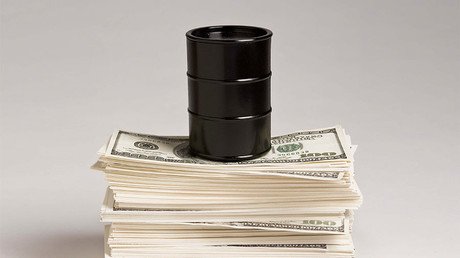Will $100 oil kill the US economy?

Brent is nearing $80 per barrel and some analyst see $100 not far off. That raises the question about how much of a dent high oil prices will make in the US economy.
$100 oil is not as painful as it once was. There are a few reasons for that. The US is now a significant oil exporter, helping to lessen the damage to its trade balance. Also, the economy uses less energy per unit of GDP than it used to, becoming slightly more efficient with each passing year.
In the past, high oil prices dragged down the US economy, acting as a tax that redistributed wealth from the US to oil-exporting countries in the Middle East, for example. But, the shale revolution has allowed the US to become one of the largest oil producers in the world, and more recently, an exporter of more than two million barrels per day (depending on the week). Now, to a large extent, higher oil prices redistribute wealth within the US, still damaging the vast majority of motorists, but benefiting a variety of industries related to the oil industry.
That has narrowed the impact on the country’s trade deficit. For example, in 2005, when oil prices bounced around in the $60s per barrel, the US petroleum trade deficit hit $230 billion. In 2017, when WTI was in a similar price range, the US petroleum trade deficit was just $62 billion.
According to Bloomberg Economics, $100 oil would knock off 0.4 percent from US GDP in 2020 compared to if oil traded at just $75 – not trivial by any means, but not devastating either. “The price of a barrel will have to go much higher before global growth slips on an oil slick,” economists Jamie Murray, Ziad Daoud, Carl Riccadonna and Tom Orlik said.
A survey of economists by CNBC found a mixed picture with some responding that higher oil prices are largely "a wash” for US economic growth. It is a notable shift in tone and substance from the past, when higher oil prices as an economic headwind was taken as a given. "We think the effect will round to a wash,'' Michael Feroli, chief US economist with JP Morgan Chase, told CNBC. He noted that higher oil prices would reduce GDP by 0.2 percent, but that would be offset by an increase of 0.2 percent in capital spending.
That conclusion was echoed by St. Louis Federal Reserve President James Bullard who agreed that higher oil prices spark more activity in the energy sector, offsetting some of the losses elsewhere. "This will also encourage US production, and compared to years past, oil prices have a more neutral effect on the US economy,'' Bullard said. "It used to be a big oil shock was probably bad news, … but now I think it's neutral."
Still, the marginal impact is only true up to a certain point. Drivers can stomach $3-per-gallon gasoline, but $4 per gallon is another matter. Also, the benefits accruing to the energy sector and related industries are concentrated, while the economic drag on consumers is widespread. If retail gasoline prices average $2.96 per gallon this year, it will wipe out a third of additional take home pay from the 2017 tax cuts, according to Morgan Stanley.
Moreover, to the extent that higher oil prices stokes inflation, it could spur more aggressive action from the US Federal Reserve. More rate hikes would drag down the economy, making the cost of borrowing more expensive. It would also strengthen the US dollar, hurting export industries.
Citi economists warned that if oil prices rise even further, there could be a “particularly hostile environment” for global investors in the coming months. The investment bank said that President Trump’s decision to withdraw from the Iran nuclear deal “constitutes a major geopolitical shift,” that could bring on “stagflation,” consisting of weak economic growth and higher inflation, spurred on by higher oil prices.
For now, Brent is struggling to break $80 per barrel. There are plenty of reasons why prices could continue to rise, but $100 per barrel is still a long way off.
This article was originally published on Oilprice.com
















